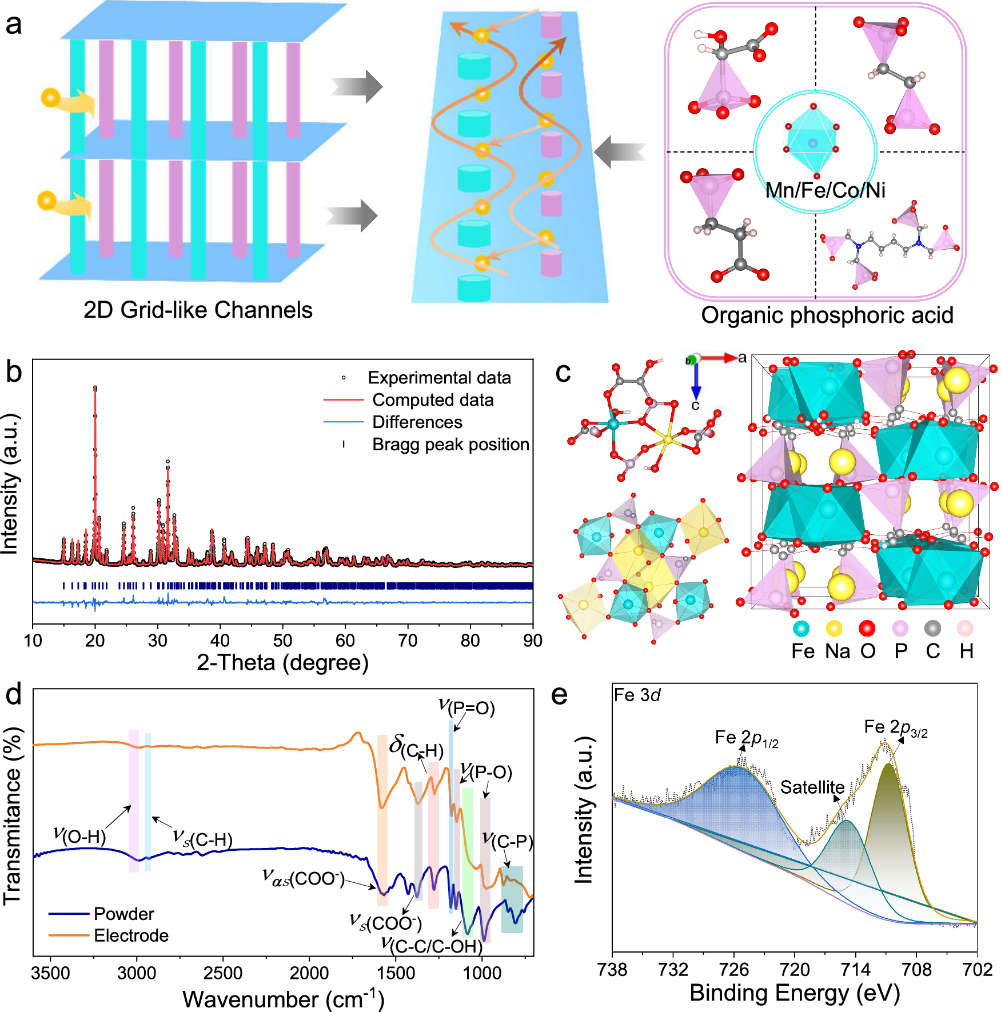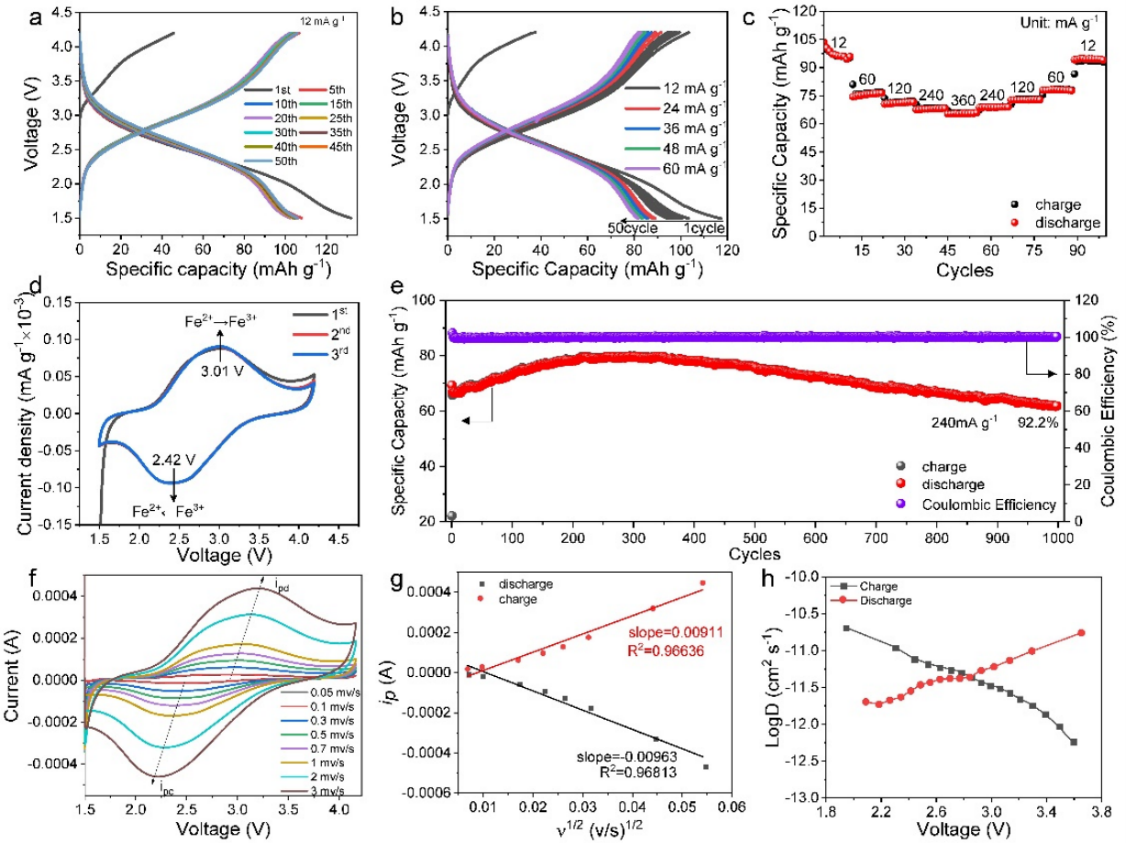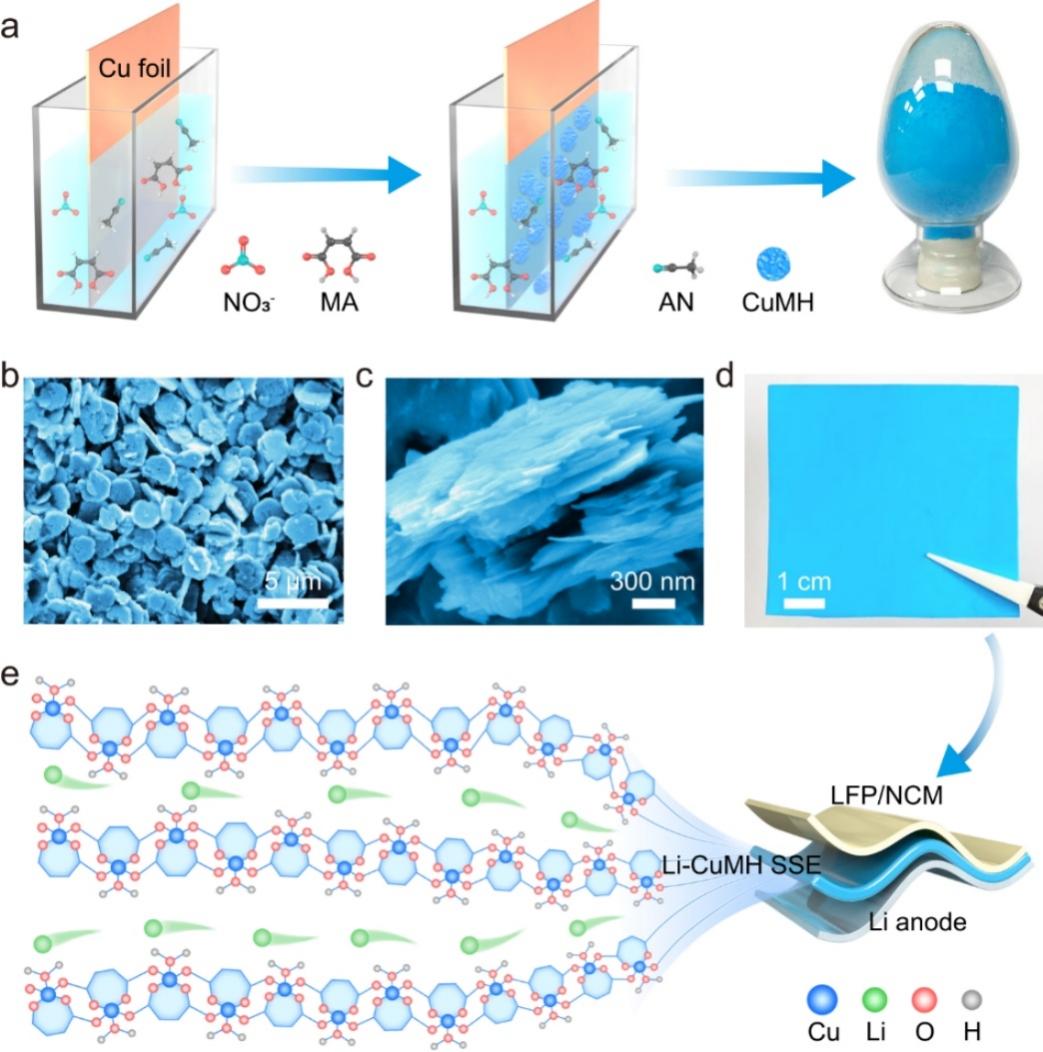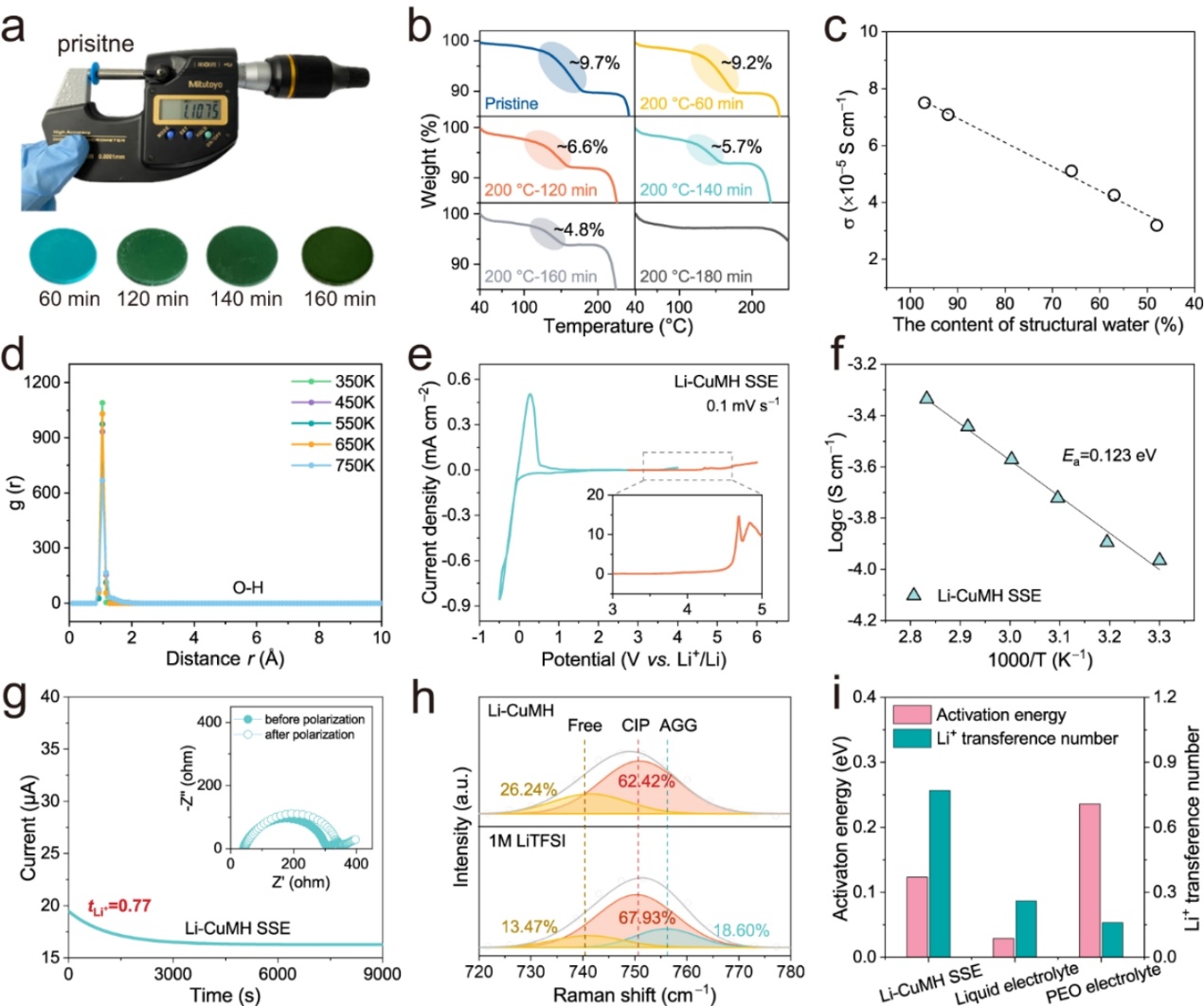Scientists Develop Organic-inorganic Hybrid Strategy to designing High-Performance Materials
In lithium-ion/sodium-ion battery secondary cells, ion migration rate and structural stability directly affect the energy density, multiplicity performance and cycle life of the battery. How to reduce ion migration barriers and improve structural stability based on microstructural modulation is a key challenge in designing solid-state electrolytes with high ionic conductivity and cathode materials with fast ionic embedding/de-embedding. The organic-inorganic hybrid structure are designed through the selection of specific organic ligands coordinated with transition metals to form metal-organic frameworks (MOFs), providing an effect way for achieving both high ionic conductivity and exceptional structural stability based on tunable interfacial structures and multi-component synergistic effects.
(https://www.nature.com/articles/s41467-025-60823-0https://www.nature.com/articles/s41467-024-45372-2)
Organic-inorganic hybridization of rigid organophosphonates with transition metals to form layered-columnar structures to enhance ionic conductivity and structural stability: The advancement of cathode materials possessing high-rate capability and extended cycle life is crucial for the viability of large-scale energy storage in sodium-ion batteries. High-throughput screening based on sodium ion migration barriers reveals that the organophosphonic acid 2-hydroxyphosphonoacetic acid can form a layered-columnar material NaFe[O3PCH(OH)CO2] with the transition metal Fe via C-P and Fe-O bonds, which has 2D grid-like channels for sodium ion migration. The results of EIS show that the intrinsic ionic conductivity of NaFe[O3PCH(OH)CO2] is as high as ~10-5 S cm-1 and the activation energy is 0.195 eV. When used as cathode materials for sodium-ion batteries, the sodium ion mobility coefficients of NaFe[O3PCH(OH)CO2] are in the range of 10-12.2~10-10.6 cm2 s-1 during the charging/discharging process, which is comparable to that of NASICON-type cathode materials and P2-phase transition metal layered oxides. In addition, the in-situ XRD results show that the lattice constants c, a, and V of NaFe[O3PCH(OH)CO2] exhibit low strain during charging and discharging with maximum change values of 0.32%, -0.22%, and 0.11%, respectively. It is shown that there are stable C-P covalent bonds between the organic layer and the inorganic columns ([FeO6] and [CPO3]), which plays a key role in achieving a long cycle life. Even at a high current rate of 2C, NaFe[O3PCH(OH)CO2] provides a capacity of 61.6 mAh g-1 after the 1000th cycle. Therefore, the design of layered-columnar structure provides an effective way to develop a new generation of high-performance cathode materials for sodium-ion batteries. The research results were published in Nat. Commun. 16, 5718 (2025) under the title of “Layered-columnar cathode materials for sodium-ion batteries”. Associate researcher Xiaolin Zhao from Shanghai Institute of Ceramics, Chinese Academy of Sciences (SICCAS) is the first author of the paper, Prof. Ruguang Ma of Suzhou University of Science and Technology and Prof. Jianjun Liu of SICCAS are the corresponding authors.
Organic-inorganic hybridization of oxygen-rich organic ligands with mixed-valence transition metals to enhance lithium ion migration: Based on the structural design of organic-inorganic hybridization, the team of Prof. Jianjun Liu and Prof. Li Zhang of Xiamen University (XMU) jointly develop an organic-inorganic hybrid solid-state electrolyte material copper maleate hydrate (CuMH) withhighly-ordered 1D channels for Li-ions migration. The Li+-implanted copper maleate hydrate solid-state electrolytes shows remarkable ionic conductivity (1.17*10−4 S cm−1 at room temperature), high Li+ transference number (0.77) and a 4.7 V-wide operating window. This work brings new insight on exploring superior room-temperature ionic conductors based on metal coordination compounds. Dr. Xiao Zhan from XMU is the first author of the paper, while Ms. Miao Li from XMU, Associate Researcher Xiaolin Zhao and Ms. Yaning Wang from SICCAS are the co-first authors. Corresponding authors are Prof. Zhang Li, Prof. Zhang Qiaobao of XMU and Prof. Liu Jianjun of SICCAS. The research results were published in Nat. Commun. 15, 1056 (2024) under the title “Self-assembled hydrated copper coordination compounds as ionic conductors for room temperature solid-state batteries”.
The above related research was funded by the National Key Research and Development and the Key Program of Natural Science Foundation of China.
Link to the paper:
https://doi.org/10.1038/s41467-025-60823-0
https://doi.org/10.1038/s41467-024-45372-2

Design and characterization of lamellar-columnar structures formed by hybridization of organophosphonates with transition metals

Long Cyclic Stability and High Ionic Mobility Coefficient of NaFe[O3PCH(OH)CO2]

Structural design of oxygen-rich organic ligands hybridized with mixed-valence transition metals to form structures with one-dimensional ion mobility channels

High ionic conductivity of solid-state electrolyte copper maleate hydrate
Contact: Xiaolin Zhao
Shanghai Institute of Ceramics Chinese Academy of Sciences
E-mail: zhaoxiaolin@mail.sic.ac.cn



